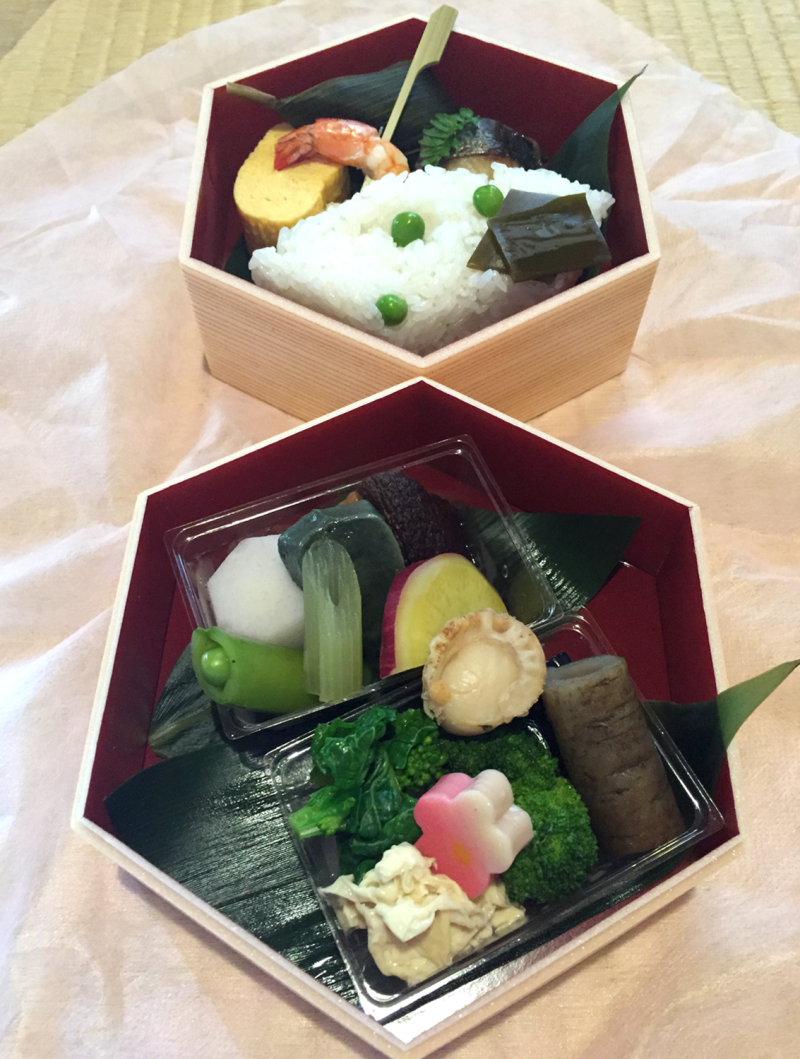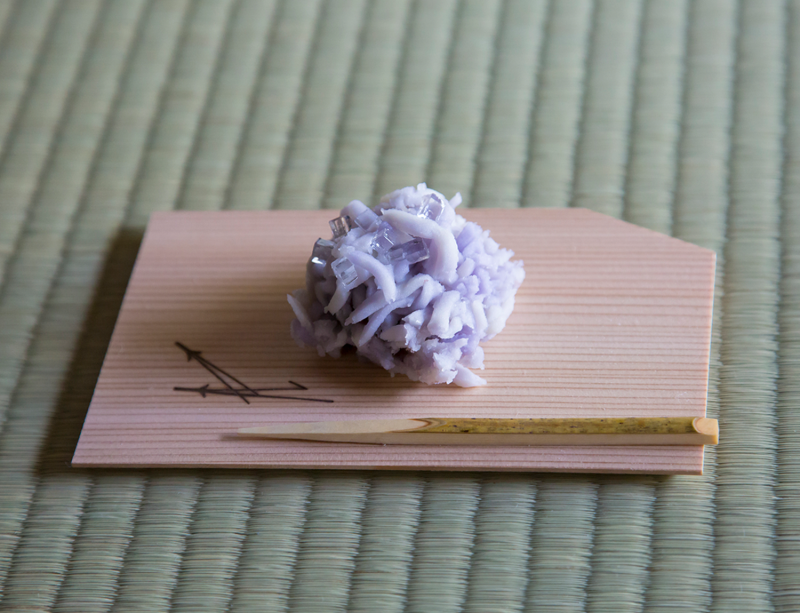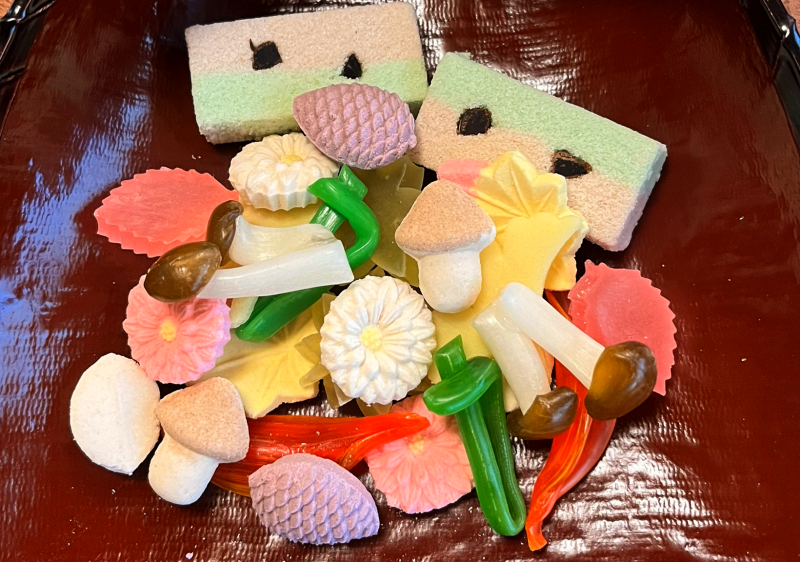
Tea Gathering Terminology
茶会 (chakai)
a tea gathering
A simplified tea gathering. It is only part of a full tea event—usually including the serving of sweets and one bowl of thin tea, or sweets and one bowl of thick tea.
大寄せ茶会 (ōyose chakai)
a large tea gathering
A simplified tea gathering in which group after group of guests are welcomed into the tea room to experience the same collection of sweets, tea, flowers, and tools. Such events may be open to the general public as well as tea practitioners, usually through the sale of tickets.
茶事 (chaji)
a formal tea gathering
A full chanoyu experience with a small number of guests (typically up to five). It is more intimate than a chakai and involves multiple stages: greetings, the laying of the charcoal to boil the water, a meal, a break in the garden, and the serving of thick and thin tea. There are different formats of chaji that a host may follow. These formats can include tea gatherings at different times of the day, such as noon (shōgo no chaji 正午の茶事), early morning (asa chaji 朝茶事), pre-dawn (akatsuki no chaji 暁の茶事), or evening (yobanashi no chaji 夜咄の茶事). There are also formats for tea gatherings at certain times of the year, such as to celebrate the end of the summer season (nagori no chaji 名残の茶事) or to celebrate the re-opening of the sunken hearth in the fall (kuchikiri no chaji 口切りの茶事) when the new tea leaves stored in a jar (tsubo) are opened for the first time.
亭主 (teishu)
host
The person who curates the theme of the tea gathering and who invites the guests.
半東 (hantō)
host's assistant
The person who assists the host to prepare for and conduct the tea gathering.
客 (kyaku)
guest
A generic term to describe any of the people invited to a tea gathering.
正客 (shōkyaku)
main guest
Along with the host, the main guest leads the tea gathering. As a representative for all the guests, the main guest is the primary speaker and leads the conversation with the host.
連客 (renkyaku)
intermediate guests
All guests seated between the main guest and the last guest.
末客 (makkyaku)・詰 (tsume)
the last guest
The last guest sits in the lowest position of the tea room and serves as an intermediary between the host and the guests in order to facilitate the tea gathering.
初座 (shoza)
the first seating
The first half of a formal tea gathering (chaji); the activities that precede the break in the garden (nakadachi).
初入り (shoiri)
first entry
When guests enter the tea room at the beginning of a tea gathering.
後座 (goza)
the latter seating
The second half of the tea gathering; the activities that follow the break in the garden (nakadachi).
後入り (goiri)
latter entry
Entering the tea room after the break in the garden (nakadachi).
中立 (nakadachi)
intermission
(lit. standing in the middle) A short break in the middle of a formal tea gathering during which guests return to the garden to relax and stretch their legs. This break occurs between the first half of the gathering during which the meal is served and the second half during which tea is prepared and received.
銅鑼 (dora)
gong
At the end of the intermission (nakadachi), the host rings the gong (dora) to summon guests from the garden back to the tea room to enjoy tea, starting with thick tea (koicha).
千鳥杯 (chidori sakazuki)
sharing of sake
The sharing of sake among host and guests occurs during the meal (kaiseki) portion of a formal tea gathering (chaji). The sake pourer travels a path that moves back and forth between host and each guest in turn as the host pours sake for each guest and each guest conversely pours sake for the host.
点心 (tenshin)
light meal

A light meal served before tea. Fewer dishes relative to kaiseki and typically served in just one course. When this type of meal is served it abbreviates the meal portion of formal tea gathering (chaji).
茶懐石 (cha kaiseki)
tea cuisine
A meal served during a formal tea gathering (chaji) that contains multiple courses, prepared and served according to set rules.
和菓子 (wagashi)
Japanese sweets
General term for Japanese confections of all types.
主菓子 (omogashi)
main sweet

General term for the primary sweet that is served at a tea gathering. Most frequently, it is a moist sweet and guests use a bamboo or metal pick to eat it.
干菓子 (higashi)
dry sweet

General term for a sweet that the guests can take with their bare hands. Generally appropriate to accompany thin tea (usucha) but not thick tea (koicha).